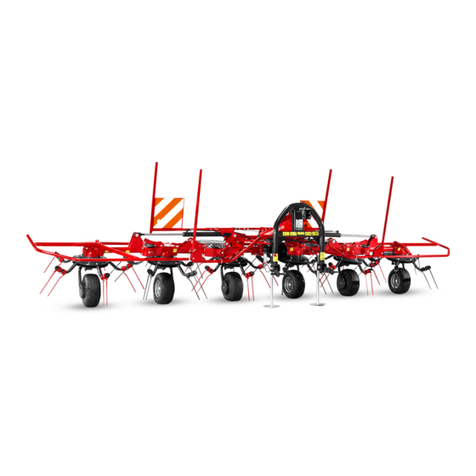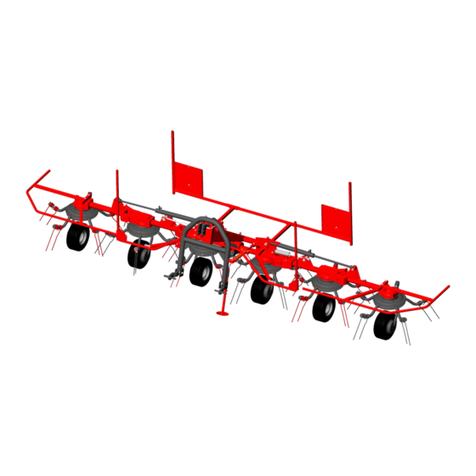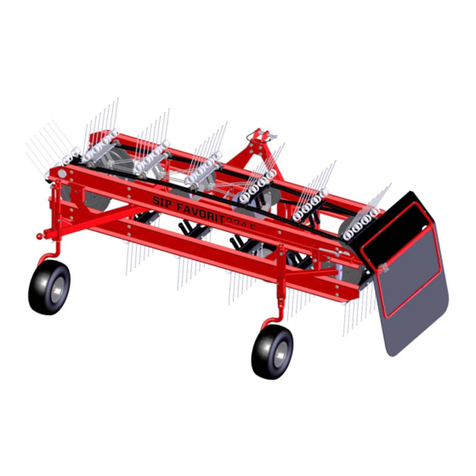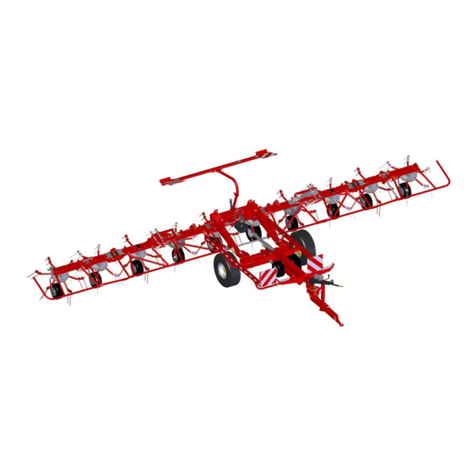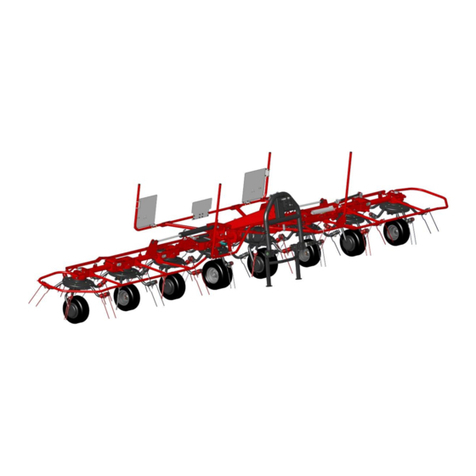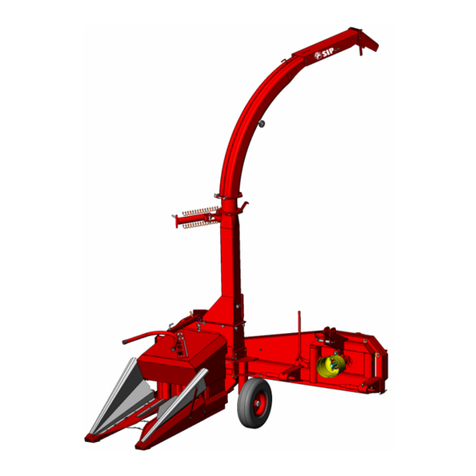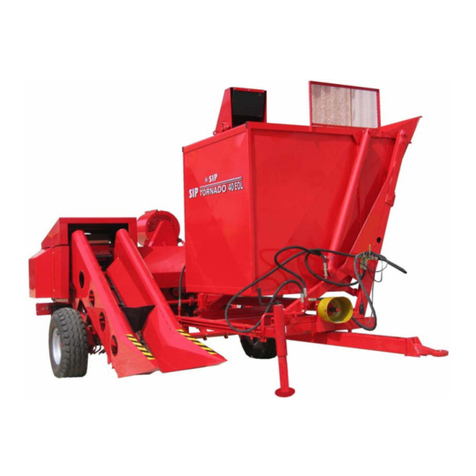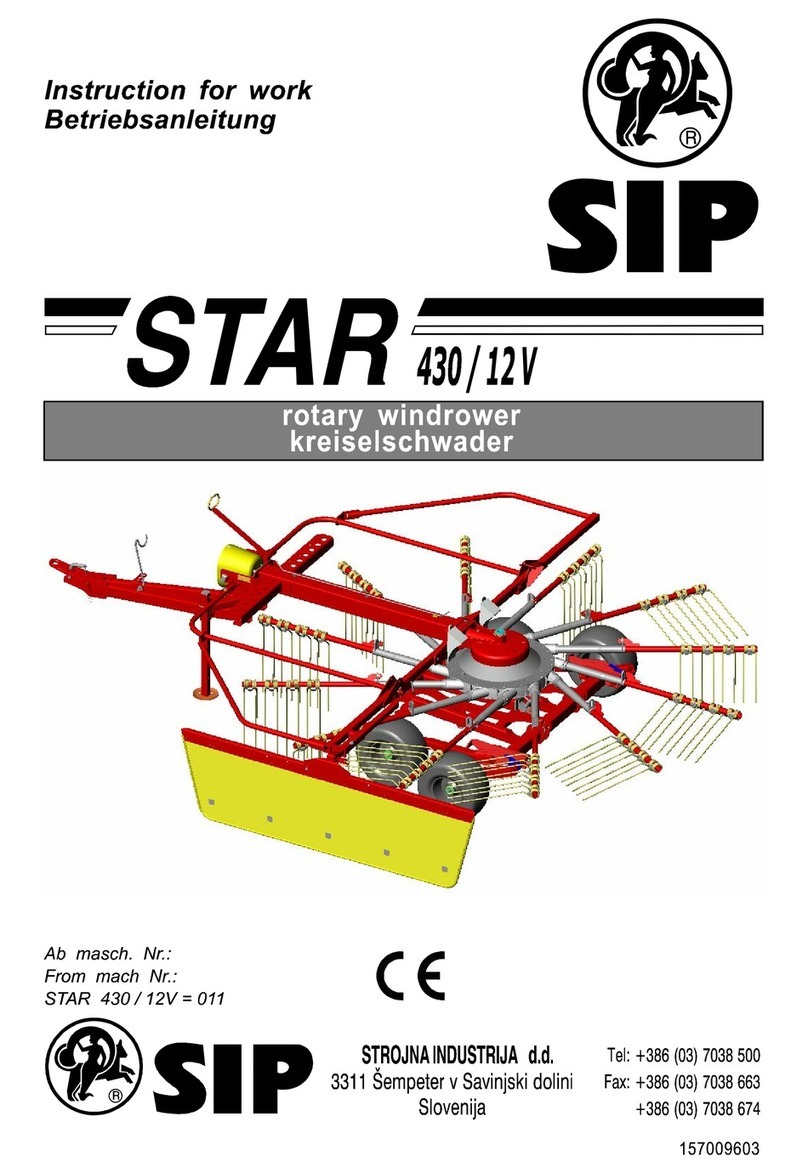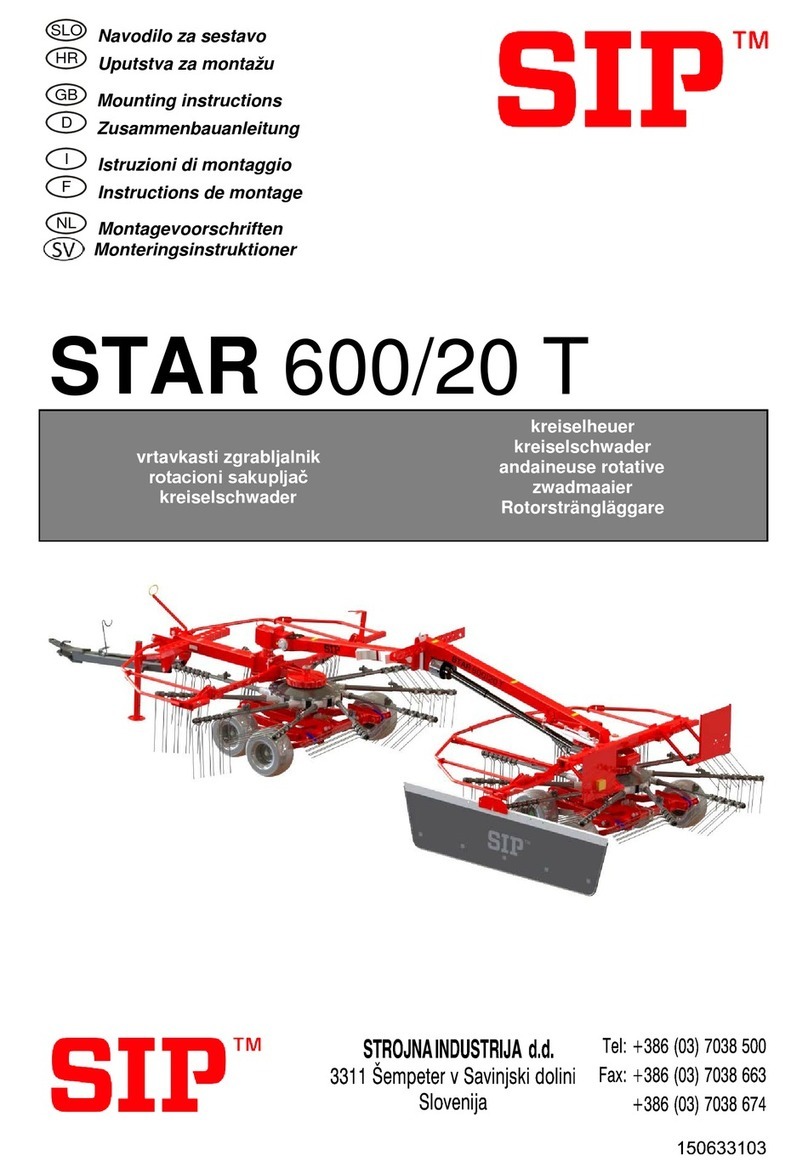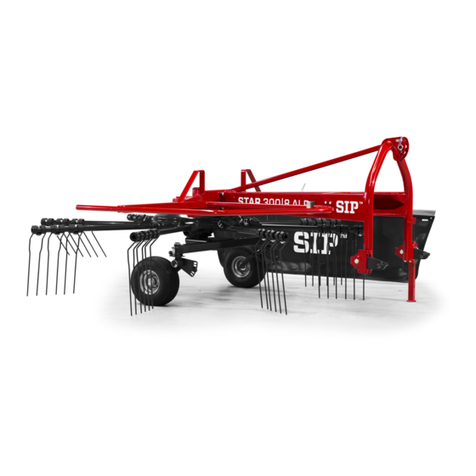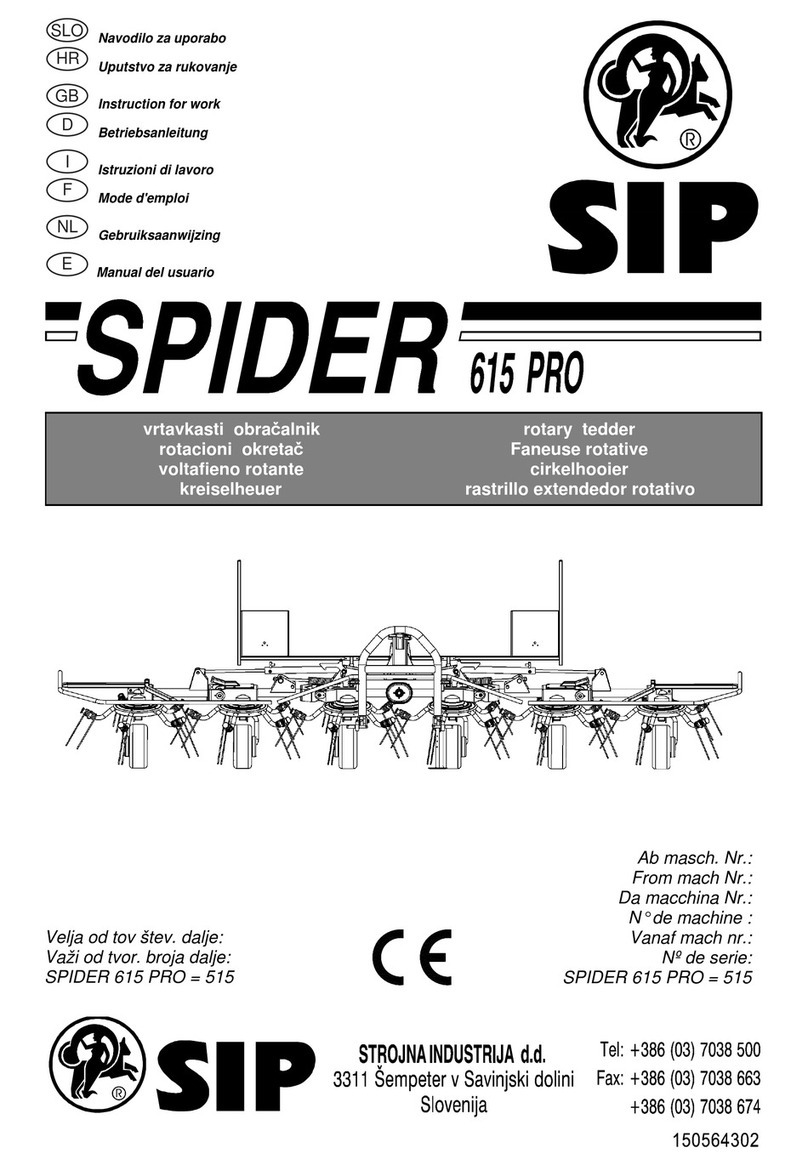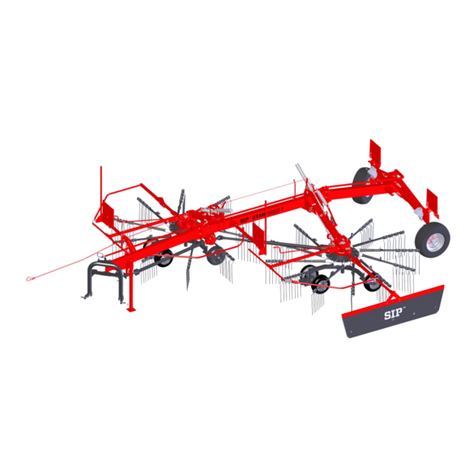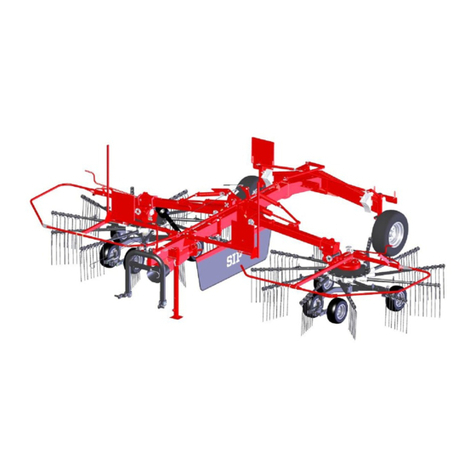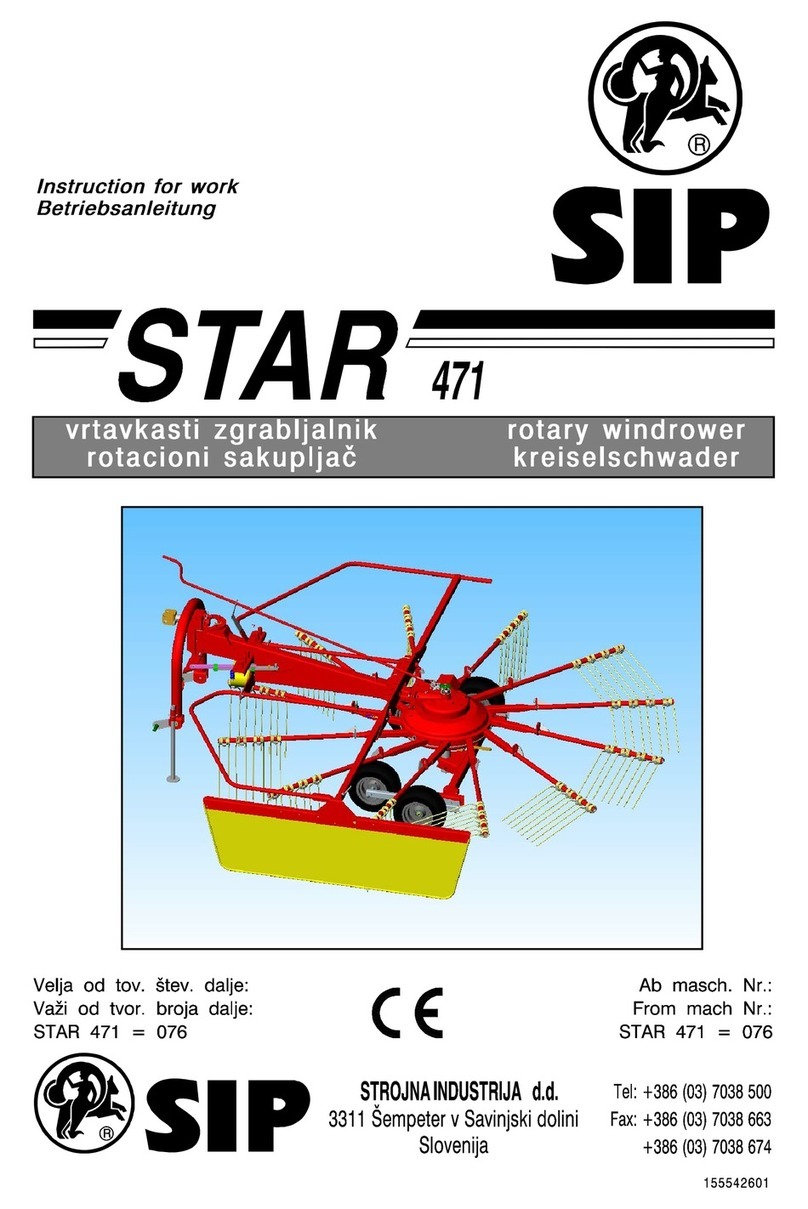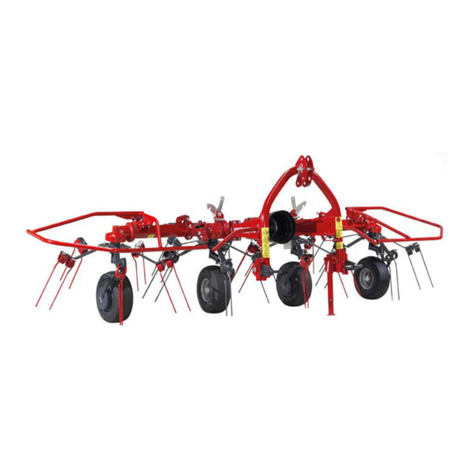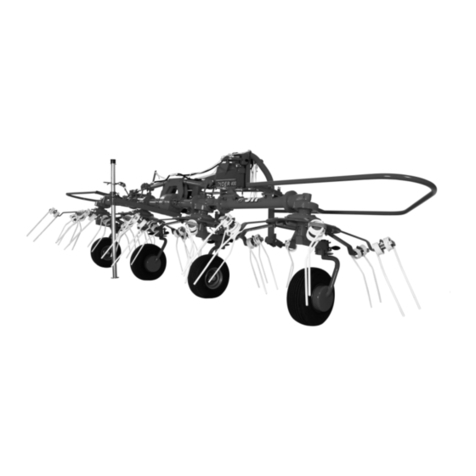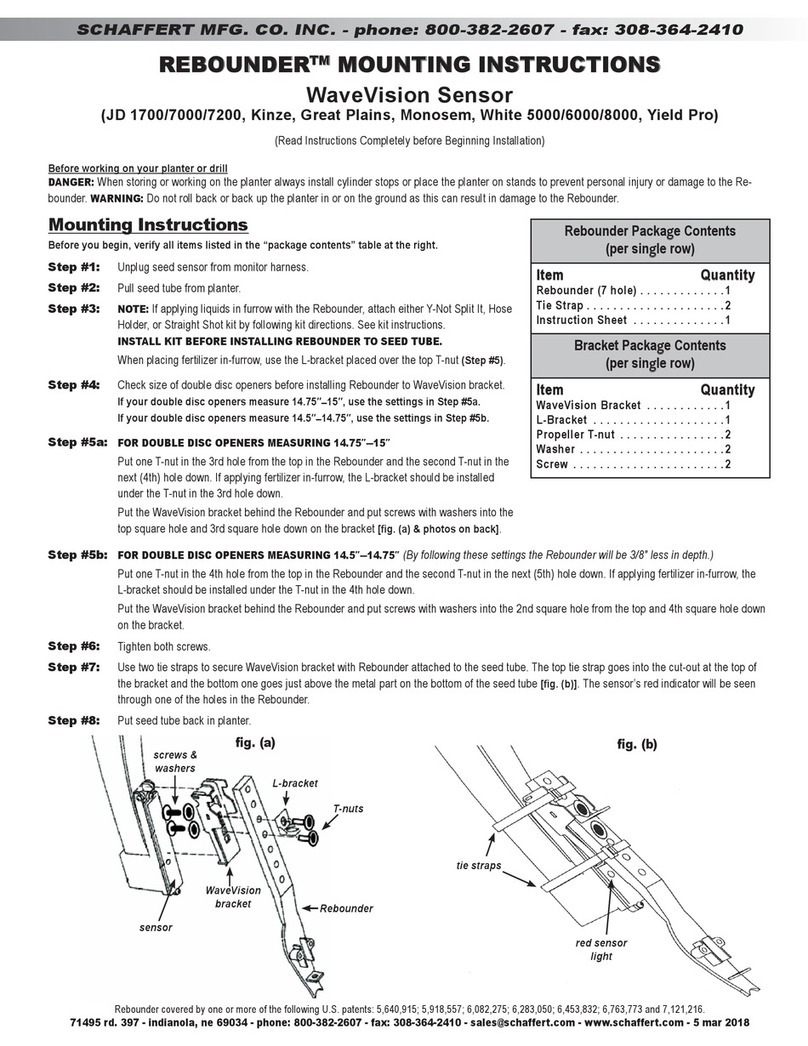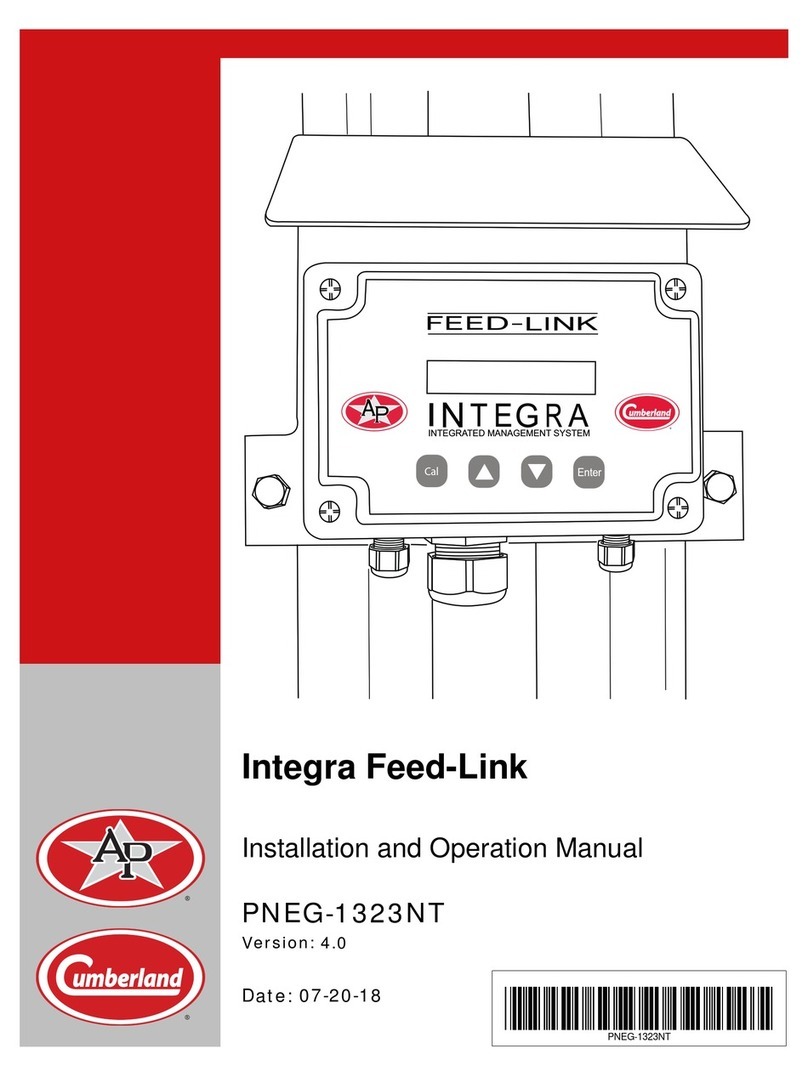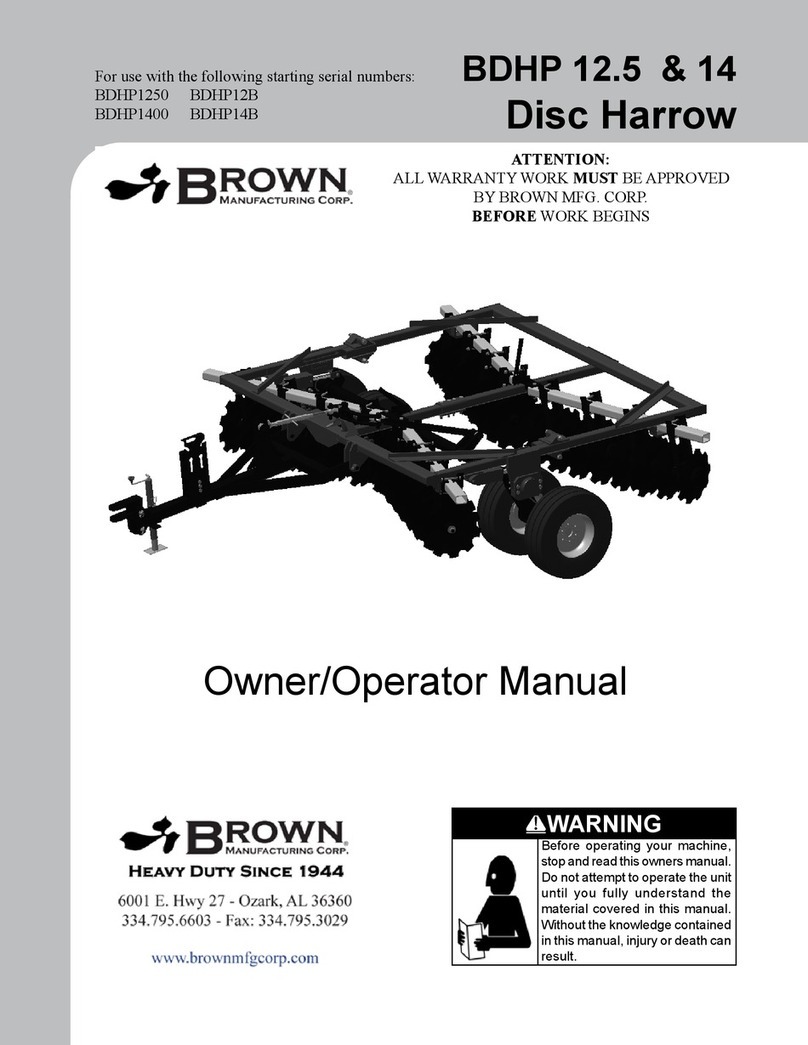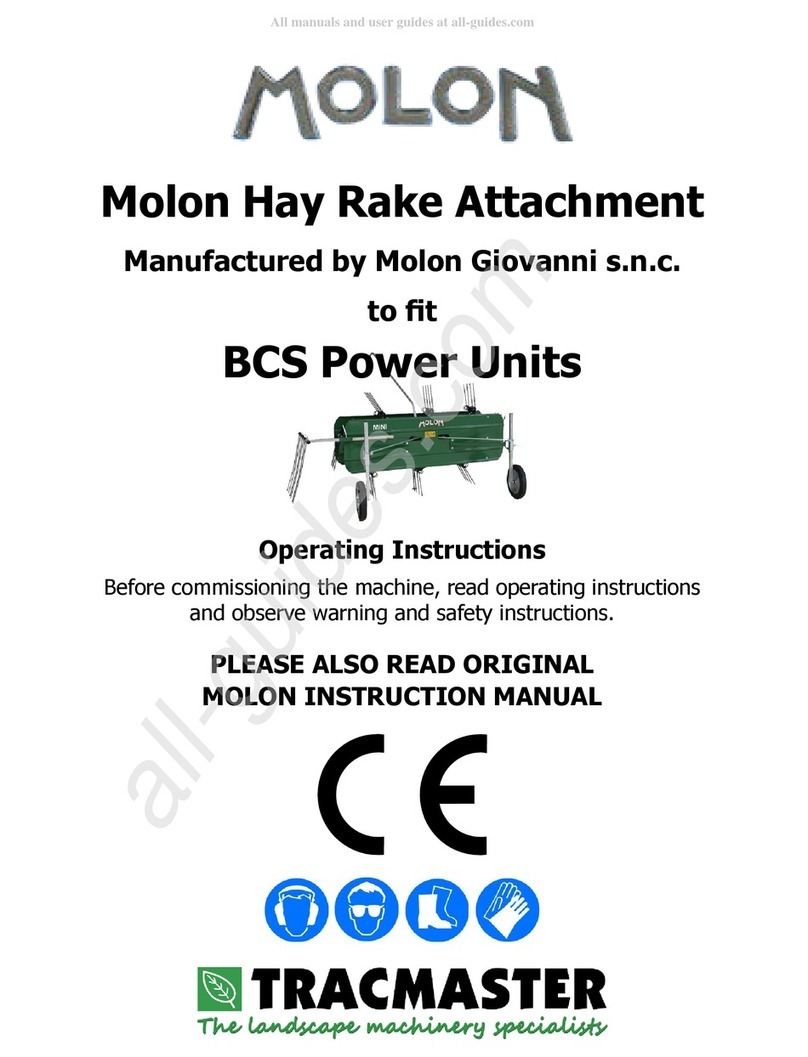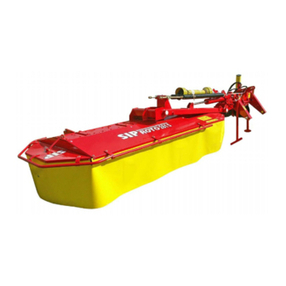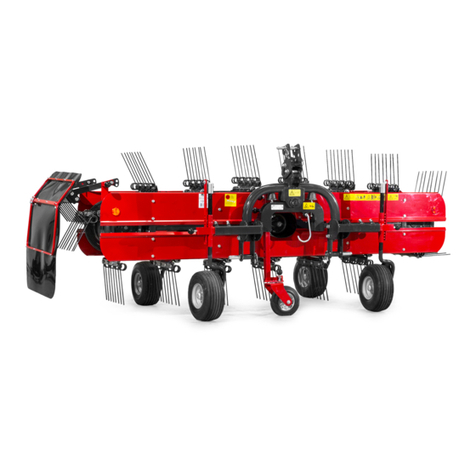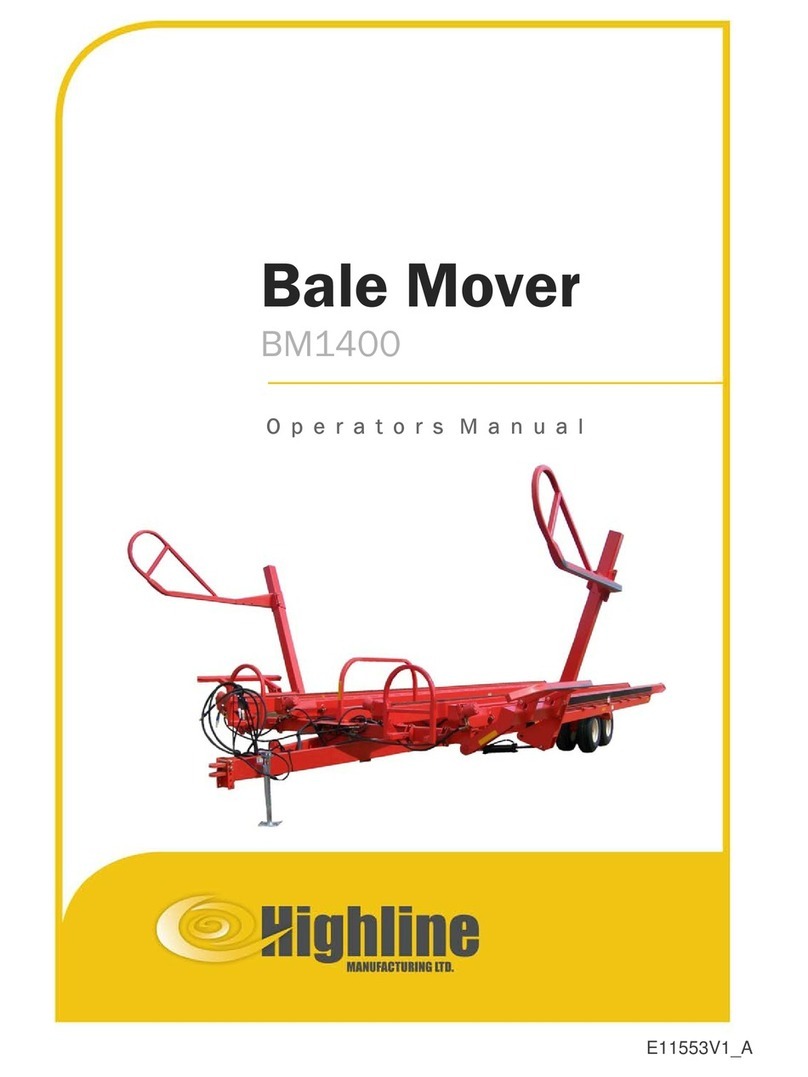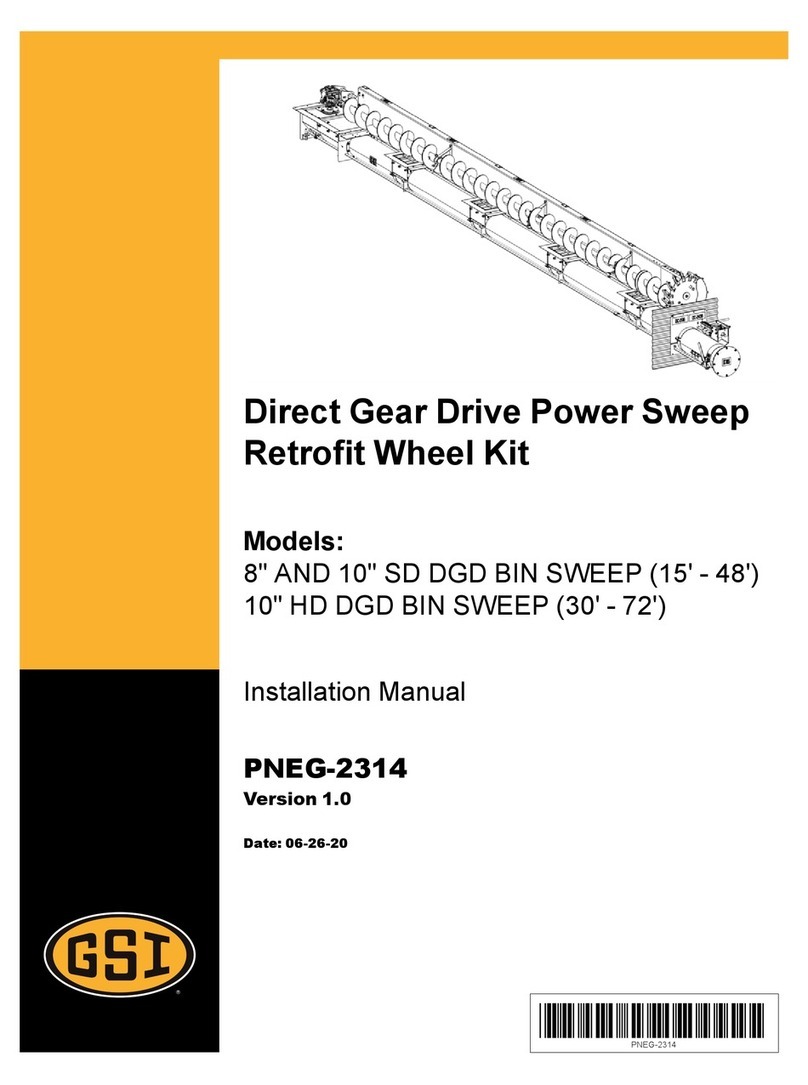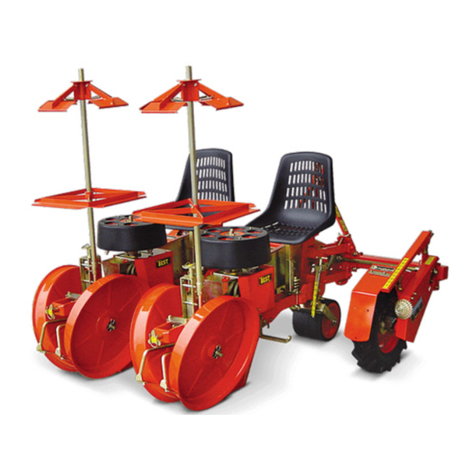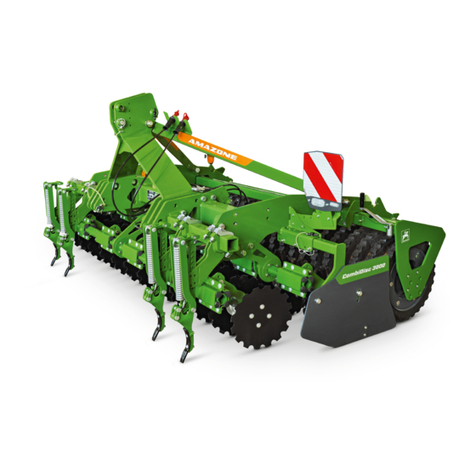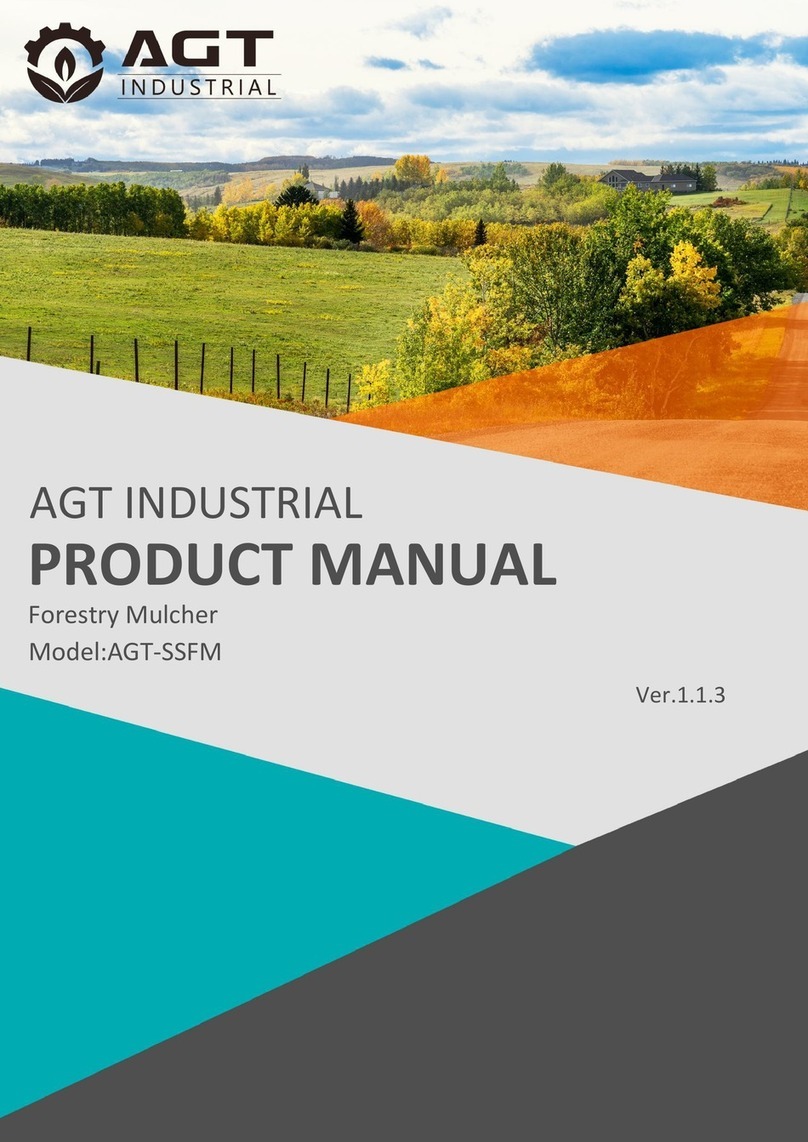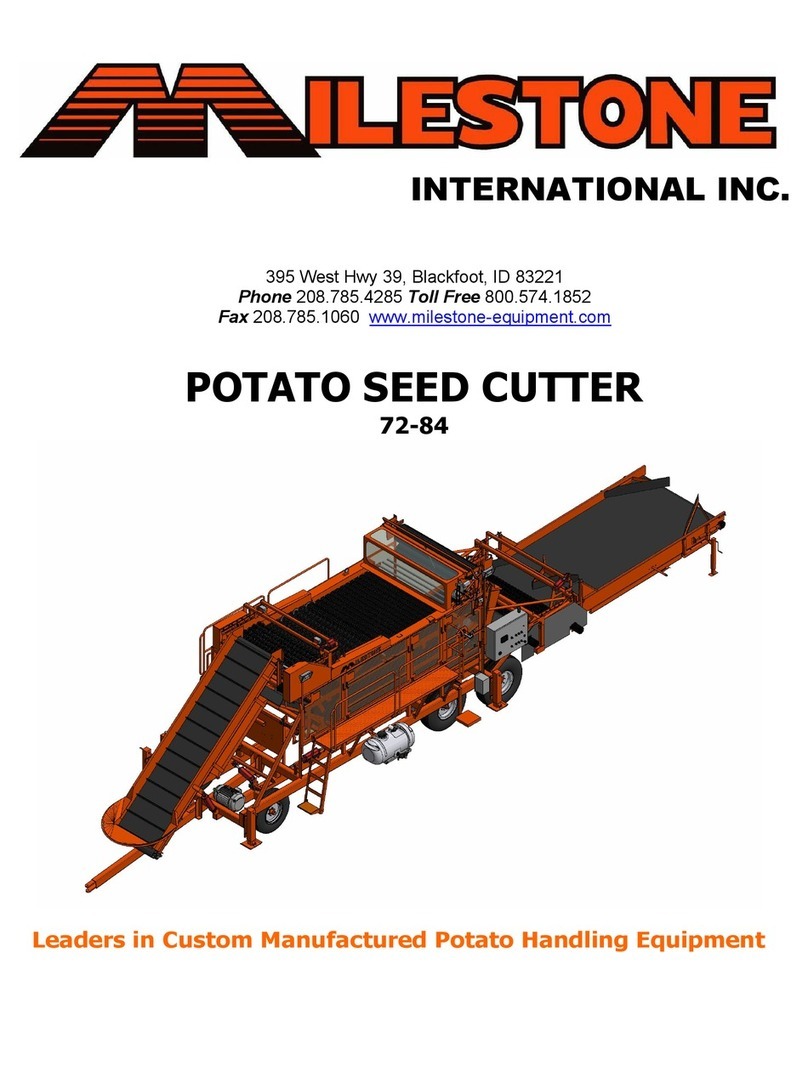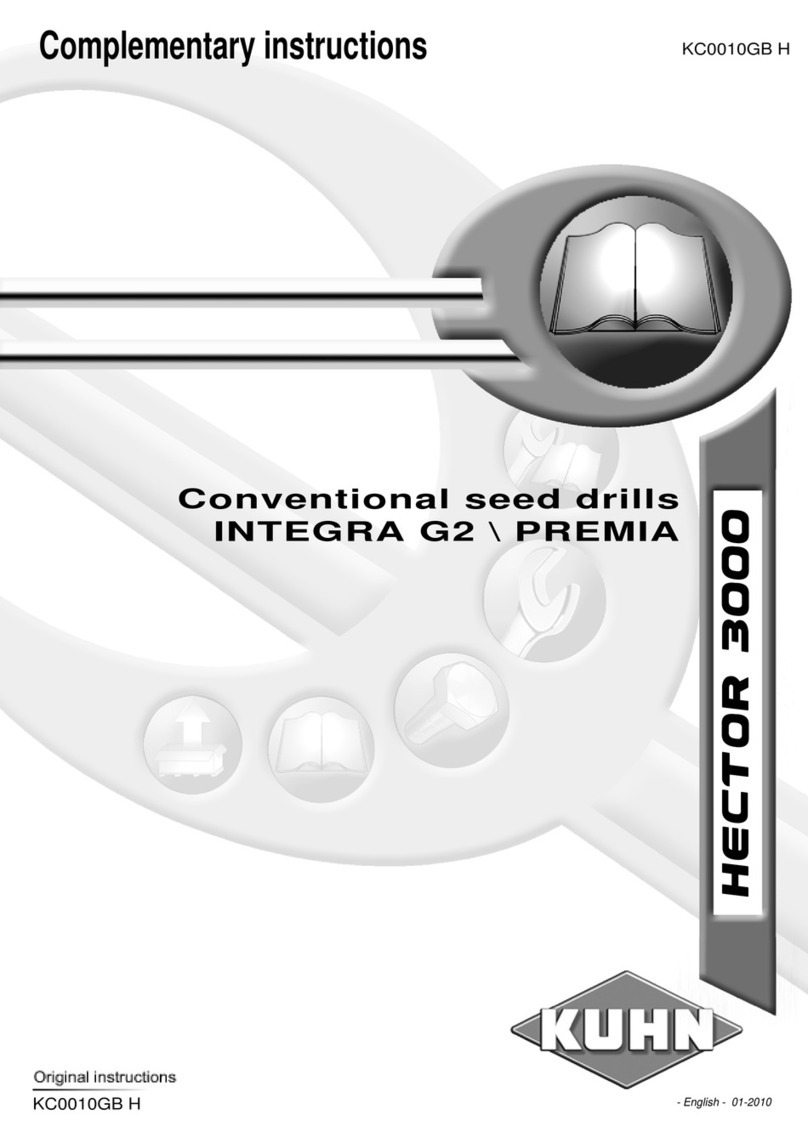
SILVERCUT
7
PTO shaft drive (only for tools driven by a PTO
shaft)
1. Only PTO shafts prescribed by the manufacturer
may be used!
2. The cylindrical guards and the protective funnel on
the PTO shaft as well as the machine-side silencer
must be in perfect condition.
3. With the PTO shafts, provide the prescribed pipe
protection in the transport and working position!
4. Only couple and decouple the PTO when the PTO
shaft is disconnected, the engine is stopped and
the ignition key is removed!
5. When using PTOs with an overload or idle clutch
that are not covered with a guard in the tractor,
install the overload or idle clutch on the side where
the attached machine is positioned.
6. Always ensure the correct installation and
securing the PTO!
7. Secure the PTO shaft guard against rotation with a
suspension chain.
8. Before connecting the PTO shaft, make sure that
the selected speed and direction of rotation of the
tractor hitch correspond to the permissible speed
and direction of rotation of the machine!
9. When using the PTO, make sure that the speed is
independent of the travel speed and that the
direction of rotation is reversed when driving in
reverse!
10. Before engaging the PTO shaft, make sure that no
one is in the danger area of the machine!
11. Never engage the PTO shaft with the engine
stopped.
12. When working on the PTO shaft, no one is allowed
in the area of the rotating hitch or the PTO shaft.
13. Always disengage the PTO shaft in case of
excessive or unnecessary angular deviation.
14. Attention! After disengaging the PTO shaft, the
danger due to the inertia of the heavy parts that
are still rotating persists. Do not approach the
machine during this time! Only when the rotation
has stopped completely, is it safe to start with
work!
15. Cleaning, lubrication or adjustment of the PTO-
driven machine or PTO shaft may only be carried
out with the hitch disengaged, the engine
switched off and the ignition key removed!
16. Place the disengaged PTO shaft on the holder
provided!
17. After removing the PTO, snap the guard to the PTO
shaft!
18. Before using the machine, make sure to
immediately repair any damage to the PTO shaft!
Hydraulics
1. The hydraulics are highly pressurised!
2. When connecting the hydraulic cylinders and
motors, pay attention to the prescribed hydraulic
pipe connection!
3. When connecting the hydraulic pipe to the tractor
hydraulics, make sure that the hydraulics on the
tractor and the tool side are not pressurised!
4. In the case of hydraulic connections of functions
between the tractor and the tool, the couplings
and plugs must be marked accordingly to avoid
malfunctions! There is a risk of reverse operation
(e.g. lifting/lowering) when replacing the
attachments!
5. Perform regular checks of hydraulic pipes and, if
necessary, replace them in case of damage or
wear! The replaced pipes must meet the technical
requirements of the tool manufacturer!
6. When determining leaks, use suitable tools due to
the risk of injury!
7. High pressure fluids (hydraulic oil) can penetrate
the skin and cause severe injuries when drained.
Immediately seek medical attention in case of
injuries! Risk of infection!
8. Before carrying out work on the hydraulics frame,
lower the frame to the ground, depressurise the oil
system and stop the engine!
Tyres
1. While working with the tyres, make sure that the
machine is safely placed and secured against
rolling off (wedge).
2. For mounting the wheels and tyres, sufficient
expertise and the appropriate mounting tools are
required!
3. Tyre repair work must only be carried out by
professionals using the appropriate mounting
tools!
4. Check tyre pressure regularly! Consider the tyre
pressure according to regulations!
Maintenance
1. After finishing mowing, clean the cutter bar.
When using a high-pressure cleaner, DO NOT
direct the jet to the bearings.
2. In principle, you can only carry out repairs,
maintenance and cleaning, as well as fault
elimination with the drive switched off and the
engine stopped! Pull out the ignition key!
3. Check regularly whether nuts and bolts are
properly tightened and, if necessary, re-tighten
them!
4. Always provide suitable safety support when
carrying out maintenance works on a raised
machine!
5. Use the appropriate tools and protective gloves
when performing repairs, maintenance and
cleaning works.
6. Store oils and greases properly.
7. Always disconnect the power supply before
working on electrical components.
8. Inspect the guards that are subject to wear and
replace them in a timely manner!
